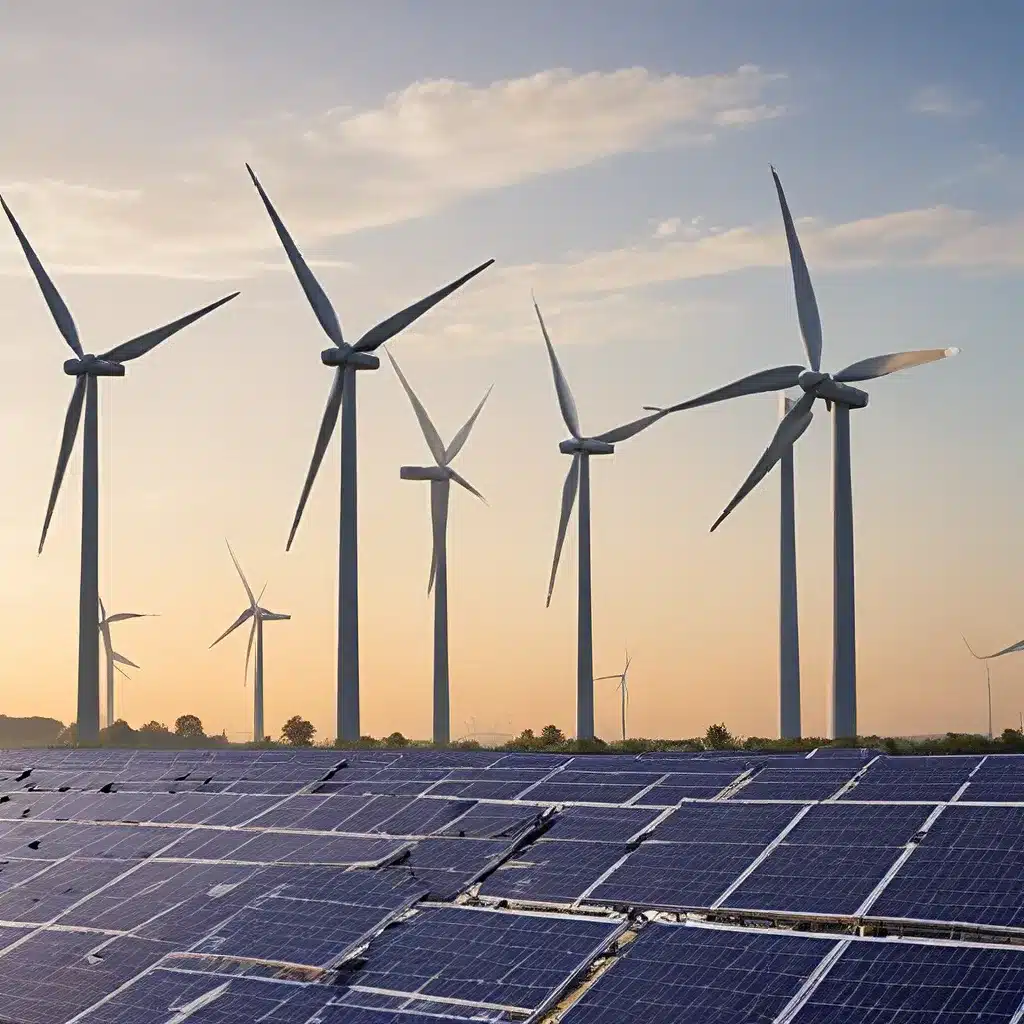
Navigating the Renewable Energy Transition: Unlocking the Circular Economy Potential
As a passionate advocate for a greener, more sustainable future, I’ve been closely following the rapid advancements in renewable energy technologies. The transition towards a low-carbon energy model is undoubtedly one of the most pressing challenges of our time, and it’s inspiring to see the collective efforts of governments, industries, and individuals to tackle this global issue.
However, as we dive deeper into this transformative journey, it’s becoming increasingly clear that the road ahead is paved with both challenges and opportunities. The deployment of renewable energy infrastructure, such as wind turbines, solar photovoltaic (PV) panels, and energy storage systems, comes with a unique set of considerations – one of which is the emerging waste streams that this transition is generating.
The European Environment Agency (EEA) has been at the forefront of this issue, conducting a comprehensive analysis of the circular economy aspects and the opportunities and challenges presented by these new waste streams. Their findings are truly eye-opening and have inspired me to dive deeper into this topic, exploring how policy frameworks and innovative solutions can help us unlock the full potential of a circular clean energy system.
Anticipating the Waste Tsunami: A Ticking Time Bomb?
As the world races to decarbonize its energy infrastructure, the scale of the transformation is truly staggering. According to the EEA report, the power sector within the EU needs to become almost completely renewable within the next decade to achieve the ambitious goal of a net 55% reduction in greenhouse gas emissions by 2050.
This rapid shift is undoubtedly a remarkable achievement, but it also comes with a significant environmental challenge. The increasing installation of wind turbines, solar PV panels, and energy storage technologies, such as portable batteries, is generating a dramatic rise in new types of waste. And as the report suggests, this waste generation will undergo a dramatic increase in the future, requiring immediate attention from policymakers.
The nature of these emerging waste streams is diverse, ranging from high-value critical raw materials to established recycling systems like steel, glass, and aluminum. This presents both opportunities and obstacles when it comes to managing these waste streams in a circular and sustainable manner.
Unlocking the Circular Potential: Strategies for a Greener Future
One of the key circular economy opportunities identified by the EEA is the potential to recover and reintroduce these valuable materials back into the production cycle. This not only minimizes the environmental impact of the renewable energy transition but also builds resilience by reducing our reliance on primary raw materials.
However, the report highlights several challenges that are hindering the implementation of these circular solutions. For instance, the ecological and climate benefits of using recycled materials are often not fully accounted for in the costs, making it difficult for secondary materials to compete with primary materials that are sometimes cheaper.
Additionally, the long service life of much of the renewable energy infrastructure means that policies and protocols need to be developed now to effectively manage the future waste streams. This requires forward-thinking and a proactive approach to ensure that the sustainability and green credentials of the renewable energy sector are not compromised.
Embracing a Circular Clean Energy System
To address these challenges and unlock the circular economy potential of the renewable energy transition, the EEA report outlines a comprehensive framework for a circular clean energy system. This framework encompasses various life cycle stages, including materials, ecodesign, production and distribution, consumption and stock, and waste and recycling.
By applying circular economy principles across this entire spectrum, we can mitigate the increasing waste generation and significantly improve the sustainability of the renewable energy sector. This includes innovative product design, efficient resource utilization, enhanced recycling and recovery processes, and the development of new business models that prioritize circularity.
The Policy Landscape: Driving the Circular Transformation
However, policy interventions will be crucial in facilitating this circular transformation. The report highlights a range of legislative measures, voluntary actions, and market-based incentives that can be employed to address the identified challenges and promote the implementation of circular solutions.
For instance, regulatory frameworks that incentivize the use of recycled materials or mandate the design for disassembly and recyclability of renewable energy components can significantly boost the circularity of this sector. Extended producer responsibility schemes and green public procurement policies can also drive the adoption of circular practices throughout the entire supply chain.
Moreover, targeted investments in research and development for innovative recycling technologies and circular business models can help overcome the financial and technological barriers that currently impede the widespread implementation of these solutions.
Embracing the Circular Mindset: A Call to Action
As I delve deeper into this topic, I’m struck by the immense potential that lies within the intersection of renewable energy and the circular economy. The renewable energy transition is not just about reducing emissions and meeting sustainability targets; it’s also an opportunity to redefine how we produce, consume, and manage our energy resources in a more holistic and sustainable manner.
By embracing a circular mindset and driving the necessary policy changes, we can unlock the full potential of the renewable energy sector, minimizing its environmental impact while maximizing its green credentials. This, in turn, will contribute to a more resilient and sustainable future** for all.
As a renewable energy enthusiast, I’m excited to see how this dynamic landscape continues to evolve, and I encourage you, the reader, to join me in exploring the emerging challenges and opportunities that lie ahead. Together, we can shape a greener, more circular future for our planet**.
Explore our renewable energy solutions to learn more about how you can be a part of this transformative journey.

